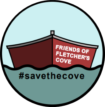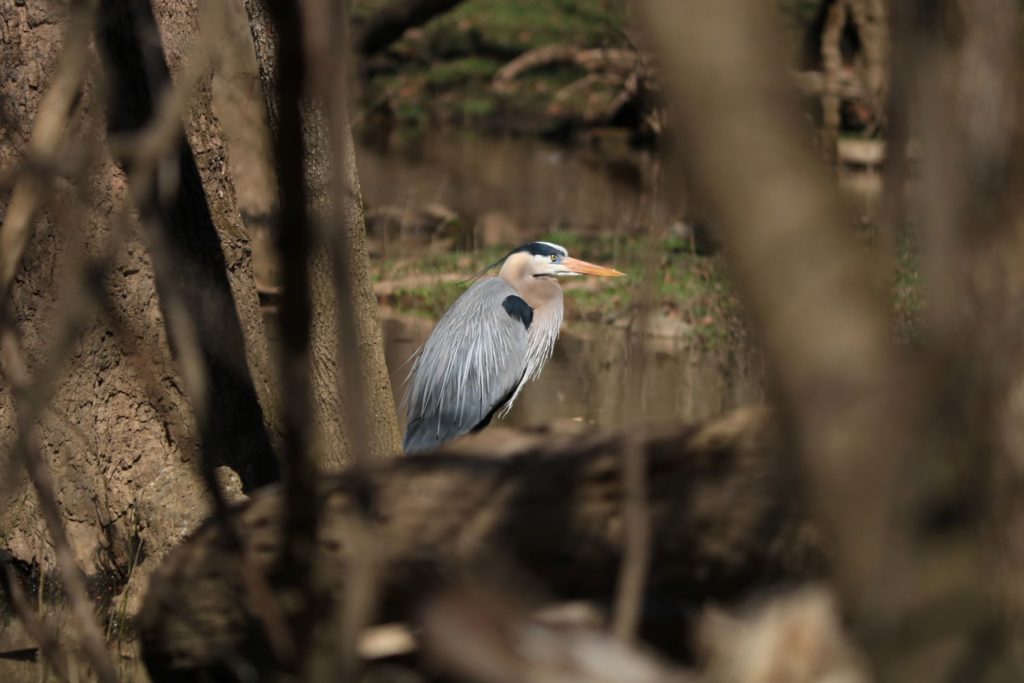By Christopher Murray, President of the DC Audubon Society
For many, the idea that a heavily urbanized area like the nation’s capital could be home to a diverse array of wildlife would seem nonsensical. Even though Washington, DC is less densely populated than other east coast cities, abundant natural resources are not what are usually associated with it. As the current President of the DC Audubon Society, part of my goal is to dispel that notion. For the past several years, I and my fellow board members and volunteers have led monthly bird walks across all parts of the city. Our walks cover all eight wards of Washington, DC and they take us to a variety of rich habitats. On any given Saturday, you may find a large group of us—sometimes numbering nearly one-hundred—trekking through the woods, wetlands, and grasslands of the city, binoculars around our necks and field guides in our pockets.
One of our favorite places to bird is Fletcher’s Cove. There are several things that make Fletcher’s Cove such a wonderful place to experience nature—especially birds. In a relatively small area it provides several different habitat types—and thus attractive feeding, breeding, and nesting grounds for a wide array of bird species. Whether it be the deep waters of the Potomac River, the high bluffs that tower over the river on the Virginia side, or the riparian habitat leading from the boathouse along the river’s DC side, Fletcher’s Cove offers year round rewards to the avid birder. In fact, over the years 198 species have been reported there, making it among the “bird-iest” spots in the city.
It is during spring migration, though, that Fletcher’s Cove really comes alive. As we enter the spring bird migration season, folks like myself get tingly with anticipation for the return of our favorite—and oftentimes elusive—migratory songbirds. Most warblers, tanagers, orioles, vireos, and other songbirds spend only a short time in Washington as many of them move through here on their way to more northerly breeding grounds in Canada—and then on their return journey southward in the fall. When they arrive beginning in early April, the males are brightly attired in their breeding plumages and singing at full throat in search of a mate. What is most important for the ones who decide to stay is a perfect nesting habitat. They need an ample food supply, enough territory to nest without fear of competition from others also seeking roost, and protection from human intrusion.
Fortunately, Fletcher’s Cove provides all of these. When I’m asked to name the quintessential “Fletcher’s Cove” bird, I immediately think of the Prothonotary Warbler. I know of nowhere else in the city where this bird can so reliably be found. Strikingly beautiful with its bright yellow head and breast with olive back, dark grey wings, and solid black eyes, the Prothonotary Warbler finds Fletcher’s Cove ideal for rearing the next generation. They usually begin showing up around the second week of April and will stay no later than mid-August when they return to their wintering grounds in the West Indies and the northern coast of South America. The Audubon Guide describes their breeding habitat as follows: “Breeds in flooded river bottom hardwoods including black willow, ash, buttonbush, sweetgum, red maple, hackberry, river birch, and elm; or wetlands with bay trees surrounded by cypress swamp. Also nests near borders of lakes, rivers and ponds, normally only in areas with slow moving or standing water.” This bird is somewhat unique in that it builds its nest in hollowed out tree cavities so the abundance of woodlands at Fletcher’s Cove is crucial to attracting them.
When DC Audubon hosts our spring bird walk at Fletcher’s Cove, I instinctively know where to go to find a Prothonotary Warbler. Walking along the trails that begin at the boathouse parking lot, we proceed around the cove (usually stopping to observe an almost always present Belted Kingfisher) and enter the woods along the Potomac, walking north-westerly. After about 10 minutes the woods get a bit more dense, but still open enough for sunlight to dabble in through the trees. Almost on cue one can hear (you almost always hear a bird before you see it) the distinctive song of “tweet—tweet—tweet—tweet” with each note getting louder in the sequence. Everyone gets quiet and starts to scan the trees, trying to follow the sound. Like most warblers, the Prothonotary likes to perch rather high off the ground so we inevitably look up for the bright yellow flash of color that tells us we’ve found him. Even though the Prothonotary Warbler is only about 5 inches long, his bright color and loud voice make him relatively easy to spot once you know he’s around. This bird is definitely the star of Fletcher’s Cove in the spring and a sure sign that summer is near.
I encourage everyone to visit Fletcher’s Cove and experience the wonderful diversity of wildlife and DC Audubon also encourages you to promote the protection of this, and other important habitats, in the Washington, DC region.

